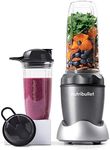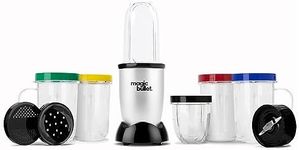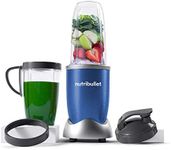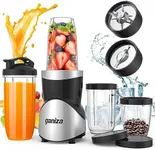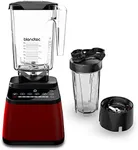Buying Guide for the Best Personal Blenders
Choosing a personal blender can make your daily routine easier, whether you want to whip up smoothies, shakes, or small batches of sauces. The right blender for you depends on how you plan to use it, how much you want to blend at once, and how much space you have in your kitchen. Understanding the key features will help you find a blender that fits your lifestyle and needs.Motor Power (Wattage)Motor power, measured in watts, tells you how strong the blender is. A higher wattage means the blender can handle tougher ingredients like frozen fruit, ice, or nuts more easily. Blenders with lower wattage (around 200-300 watts) are good for soft fruits and light blending, while mid-range (300-600 watts) can handle most smoothies and shakes. High wattage (over 600 watts) is best if you want to blend harder ingredients or make nut butters. Think about what you’ll blend most often—if you just want simple fruit smoothies, a lower wattage is fine, but for more versatility, go higher.
CapacityCapacity refers to how much the blender cup can hold, usually measured in ounces or milliliters. Smaller cups (10-16 oz) are great for single servings and easy portability, while larger cups (20-32 oz) let you make bigger batches or share with someone else. If you’re blending just for yourself and want to take your drink on the go, a smaller cup is convenient. If you want to make more at once or blend for two, look for a larger capacity.
Blade DesignThe blade design affects how well the blender can chop and mix ingredients. Some blades are better for crushing ice, while others are designed for smooth purees. Look for stainless steel blades for durability. If you plan to blend tough ingredients, choose a blender with strong, multi-level blades. For simple smoothies, a basic blade design will do the job.
Portability and Cup DesignMany personal blenders come with cups that double as travel bottles, making it easy to blend and go. Some have spill-proof lids or handles for convenience. If you want to take your drink to work or the gym, look for a blender with a portable, easy-to-clean cup. If you’ll mostly use it at home, portability may be less important.
Ease of CleaningCleaning your blender should be quick and simple, especially if you use it daily. Some blenders have dishwasher-safe parts, while others need to be washed by hand. If you want minimal cleanup, look for models with fewer parts and dishwasher-safe cups and blades. If you don’t mind a bit more effort, hand-wash models can work too.
Control OptionsPersonal blenders often have simple controls, like a single button or twist-to-blend feature. Some offer multiple speed settings or pulse options for more control over texture. If you want a straightforward, no-fuss experience, a single-speed blender is easiest. If you like to experiment with different recipes or textures, look for a blender with more control options.
